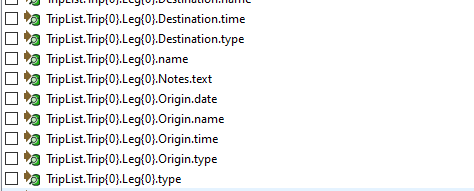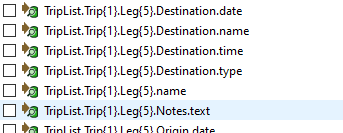Hi, I hope someone can help:
I have an XML URL.
The URL is updated from my reader with different variables.
- I go through the AttributeManager to stitch together the different URL's I need to go through.
- I input that result into the FeatureReader
- When I go the the FeatureReaders parameters and choose elements to match, I see this:

- If I take the URL the FeatureReader receives as an input and paste it into a browser, it works
- If I take the working URL and hardcode the value directly into the AttributeManager, without any variables, the FeatureReader gives me the same error
- If I paste the working URL directly into the dataset within the feature reader I get access to the parameters and can set the Elements to Match, but that won't make it updateable from the features coming in.
To me it seems like I can't use an attribute with the URL as a dataset on an XML URL in the FeatureReader.
Does anyone know how to use an attribute calculated from the input data to get the information out of an XML?
A little more info ;-)
I'm trying to calculate public transportation time from multiple locations to one location. The standard format is XML, but could also be JSON. I have no issues getting the information out from JSON, however the structure of JSON is delivered in seems to be almost impossible to sort out, since everything coming in needs to be exposed. I can only see that I can expose attributes manually, and since it's an updated value I can't expose the attributes beforehand.
The data could deliver multiple trip options.
That ways I could choose to always expose the first one coming in, but underneath that I have a new array, showing all the different options to go through. walk 500 m; take the bus; Take the train, etc.
I need to calculate the travel time, meaning I will need know how many changes the trip makes to find the last leg in the array and calculate the total traveltime, to expose that. but that is a variable from trip to trip.
I have now issues with XML, since it's already exposed.
Thank you :-)







 To:
To: While another could have the final destination time in Leg(5) or leg(6)
While another could have the final destination time in Leg(5) or leg(6)  So beforehand I don't know the length of the list.
So beforehand I don't know the length of the list.